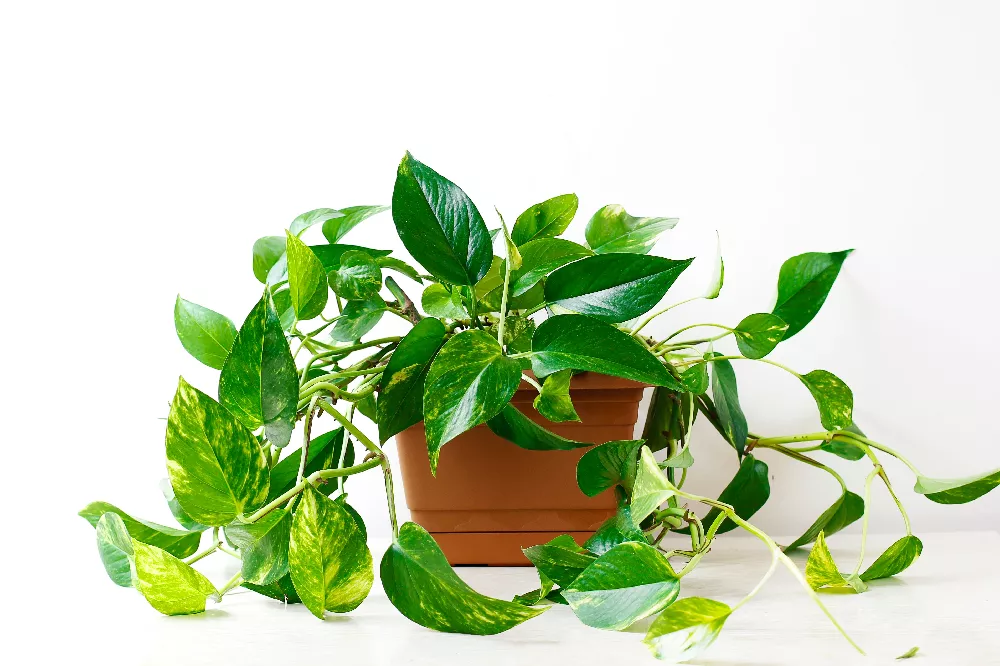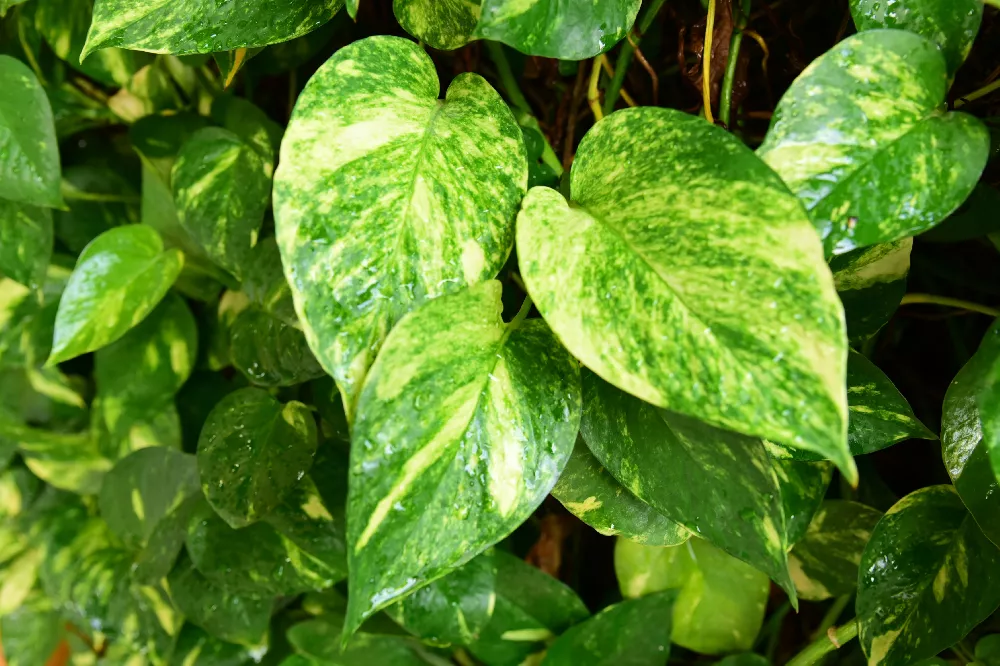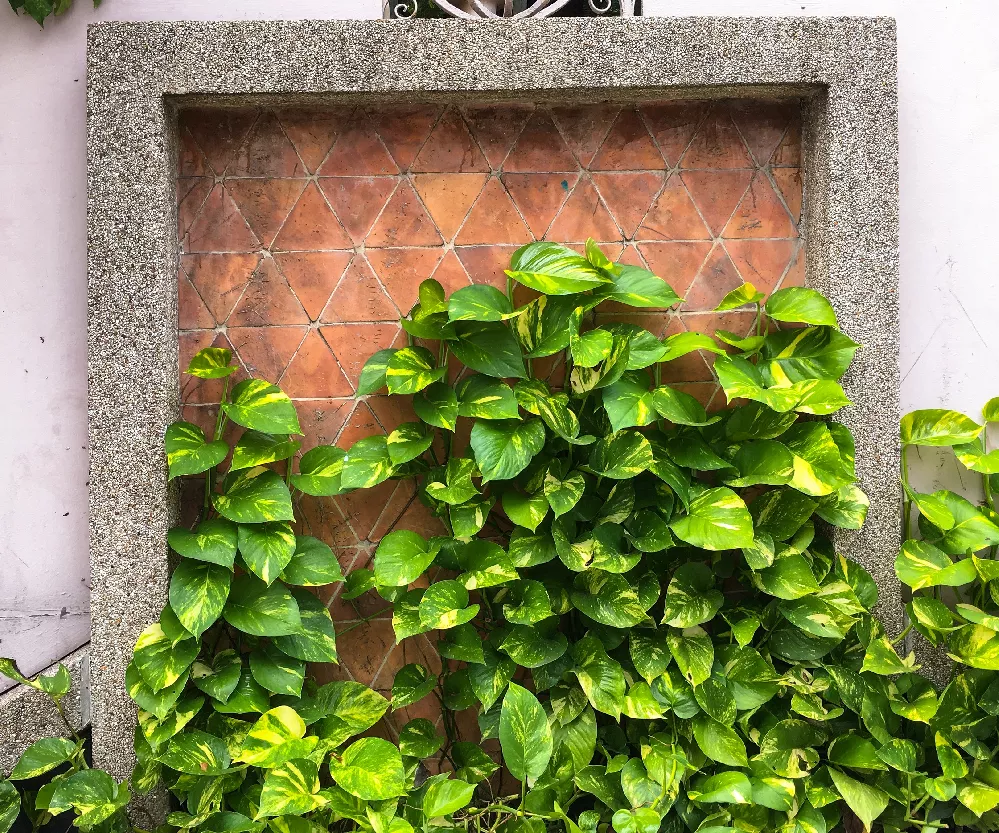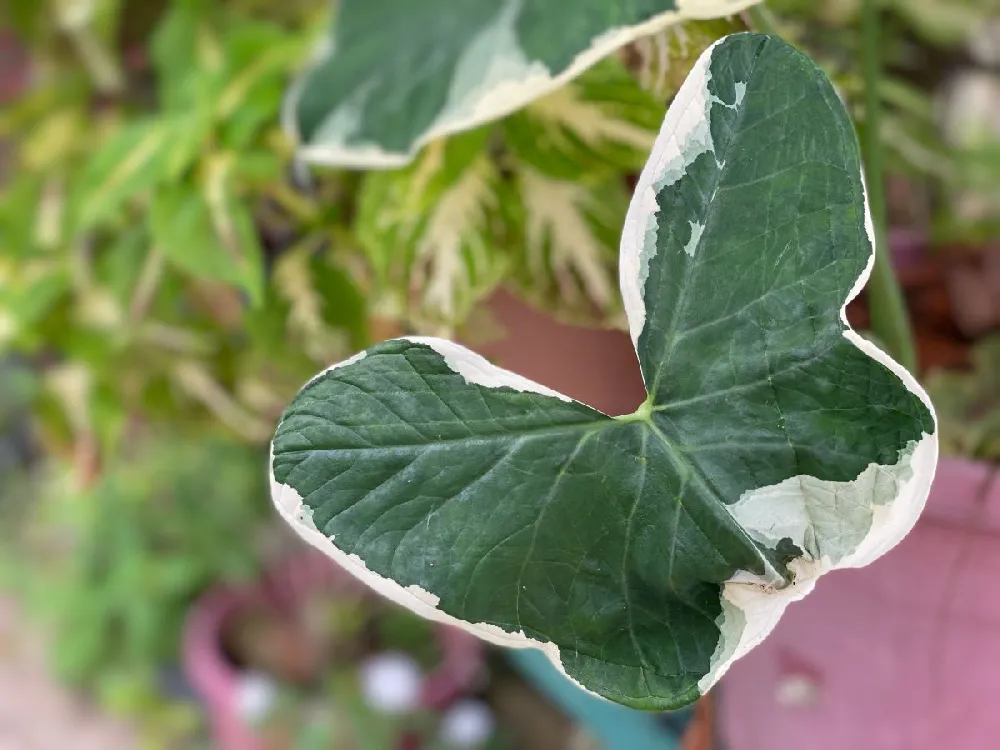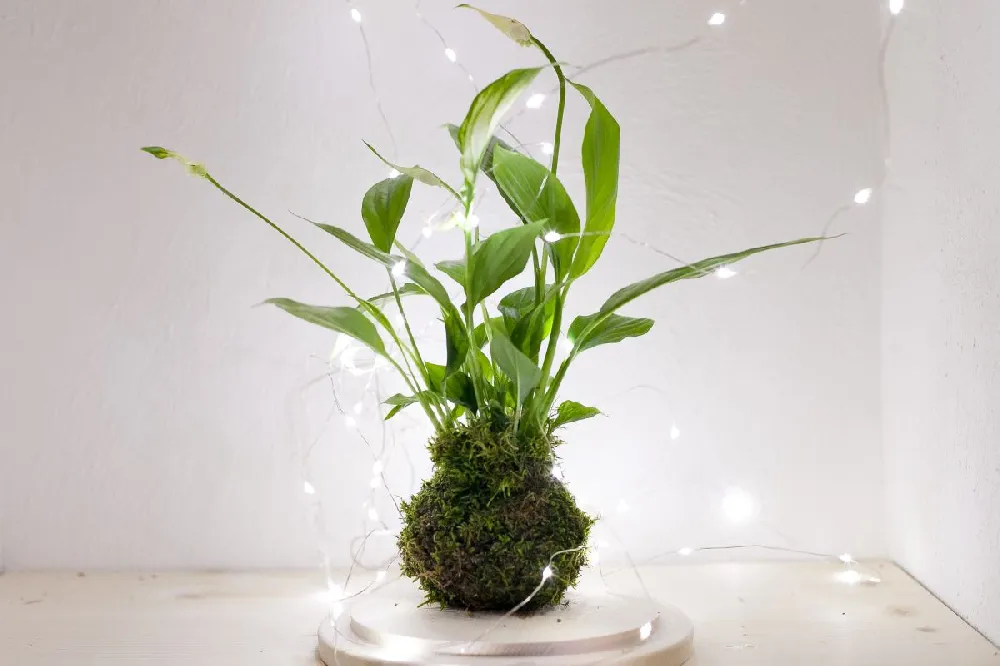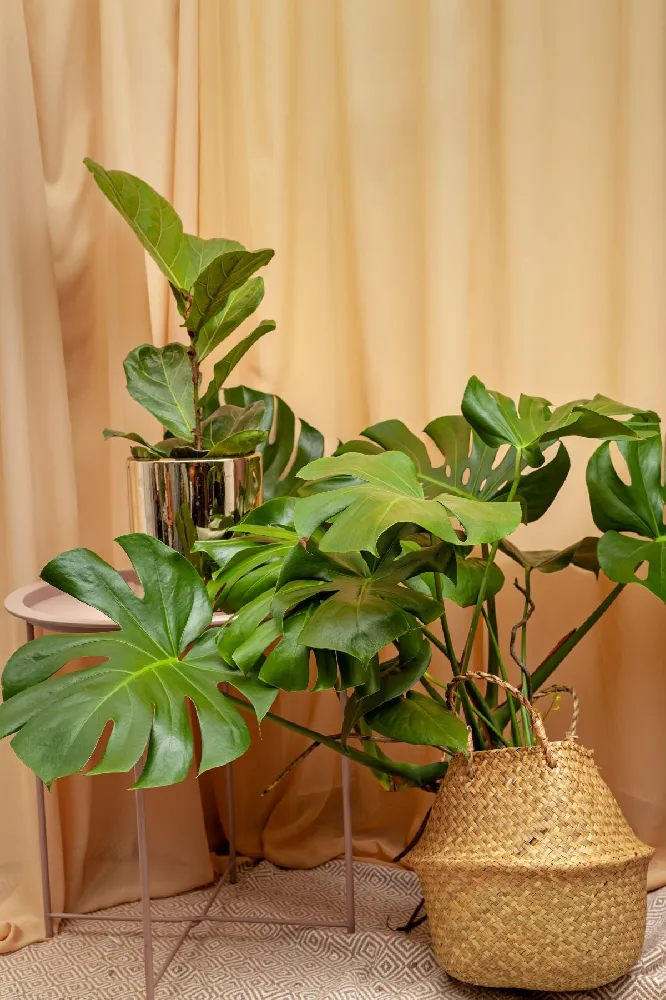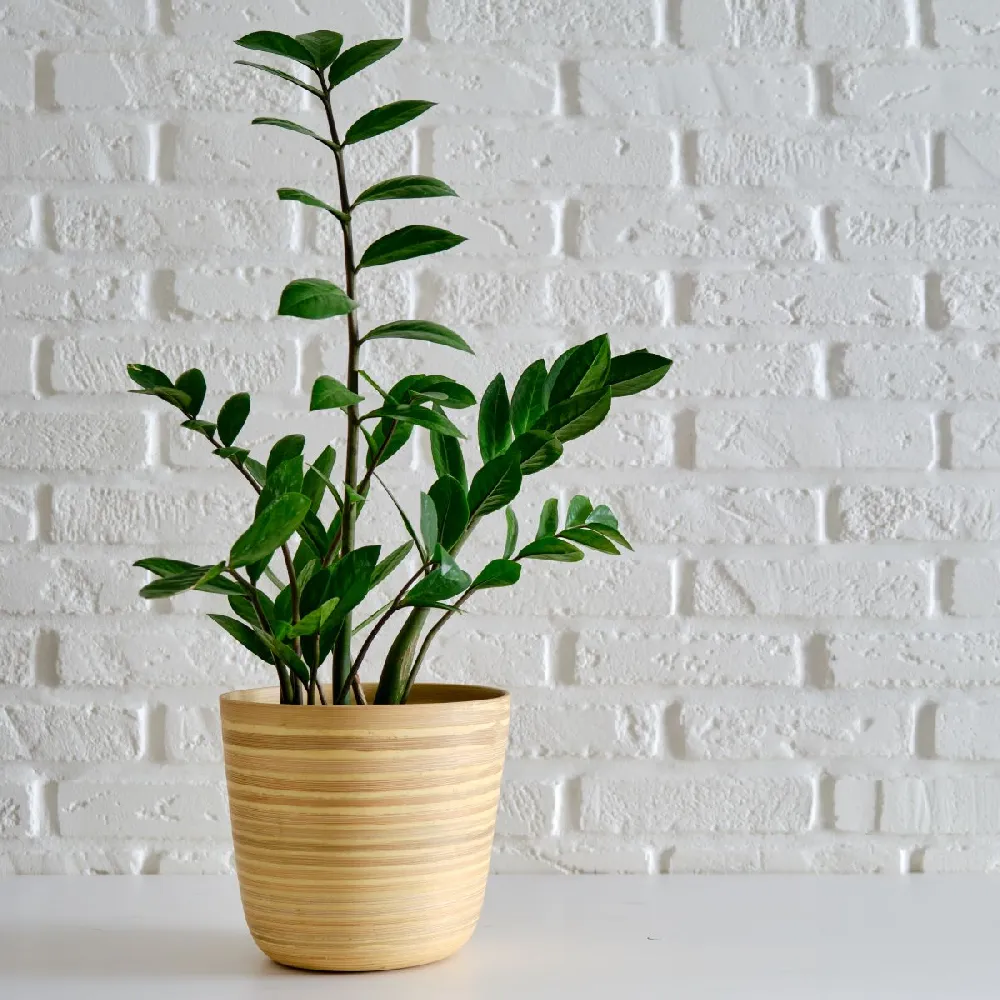- Home >
- Houseplants >
- Golden Pothos
Golden Pothos for Sale - Buying & Growing Guide
- Ships in 1-2 days
- 1-Year Warranty Eligible
- Pots or accessories are not included unless specified in the product options.
Shipping Details:
Once your order is shipped, you’ll receive an email with a tracking number and estimated delivery date. Most orders ship immediately, but some items are seasonal and may only ship in spring or fall. These products are noted on the website.
Just because a plant is tough doesn’t mean it can’t be attractive — the golden pothos, or Epipremnum aureum, is as indestructible as it is beautiful. This vine-like plant is a native of French Polynesia and can tolerate a range of less-than-ideal growing conditions, including low light and infrequent watering. Other unique characteristics include:
- Ability to survive with no natural light
- Fast-growing, especially in ideal conditions
- Has teardrop-shaped leaves that come in various shades of green.
Plant Care
Sunlight

Bright indirect sunlight will give this plant the healthiest appearance.
Watering
Wait for most of the soil around the plant's roots to be dry then soak the entire root ball.
Fertilizing

For the best growth, fertilize about once per month with a fertilizer that contains equal amounts nitrogen, phosphorus, and potassium.
Planting and Care
Planting instructions
You can grow golden pothos indoors or outdoors. However, it’s important to note that this is an invasive species, so proceed with caution if you decide to plant it in a garden. In fact, many tropical areas, like Florida, classify golden pothos as a Category II invasive plant.
These plants are good for hanging baskets, and can be trained onto supports. Plant in a soil-based potting mixture in a well-draining container one to two inches wider than the root ball. The ideal temperature for golden pothos is between 60 to 85 degrees Fahrenheit, give or take 10 degrees in either direction. Golden pothos can withstand most lighting conditions, although they do best where they receive moderate, indirect light, and some shade.
Watering and nutrients
For most golden pothos plants, a good watering once a week is sufficient. Check if the plant needs water by dipping a finger into the top layer of soil. If it is dry, proceed with watering, but if it is moist, wait a few more days. Drooping plant leaves are also a good indication that it is time to water your golden pothos. If the plant’s soil is too wet, it may fall victim to root rot. Feed your golden pothos with a balanced houseplant fertilizer (NPK 10-10-10) once or twice a month for best results.
Pruning
As a fast-growing, trailing vine, the golden pothos needs regular pruning to maintain a clean look and manageable size. How you prune your golden pothos depends on how you want it to look. Trimming the stems back to the tips will prevent it from becoming too leggy and give it a fuller appearance. You can prune a golden pothos to about two inches from the soil line, as this plant will grow back quickly. Removing leafless vines can also help keep your plant healthy.
Pests and diseases
Golden pothos are susceptible to common household plant pests, including mealybugs, spider mites, and scale insects. The easiest way to deal with an infestation is to dab away the insects with a cotton swab soaked in alcohol, although you can also use insecticidal soap. The most common diseases that affect golden pothos are root rot and leaf spot due to overwatering. You can prevent these diseases by allowing the top few inches of soil to dry out between waterings.
Temperature
The ideal temperature for the Golden Pothos plant is between 60-85º F (15-29º C). It can withstand temperatures around ten degrees lower or higher than these figures, though it will not flourish when too hot or too cold. Ideally, it should be kept away from cold draughts such as windows or doors during winter months. (Royal Horticultural Society)
Light
This plant enjoys a mix of moderate indirect light and some shade and will thrive when in these ideal light conditions. However, it also famously does fairly well in very shaded spots or areas of poor-quality light, which makes it an excellent choice for offices where natural light is not in abundance. The Golden Pothos can withstand any lighting conditions and will even live through total darkness. If conditions are too dark, it will survive perfectly well, though growth will be stunted.
If you have a variegated variety of Golden Pothos, then the colored patterns on the leaves may fade or disappear completely when not given access to light. However, once put back in a well-lit spot, the variegation will usually return. On the opposite end of the spectrum, the plant can also tolerate bright direct light, but the leaves may burn as a result of this. The plant will still cope well with harsh lighting conditions, though if the plant needs to be on a windowsill that gets full sun, it would be best to use window blinds or drapes to filter the light to a more tolerable level for best growth. Light that is too strong can also result in colors fading from the foliage.
Humidity
The Golden Pothos likes normal humidity found in homes during summer months but will benefit from a light misting every few days during winter, particularly in especially dry air conditions. You could also sit the plant pot on a tray of pebbles surrounded by water. As the water evaporates, it will help to increase the humidity around the plant.
Repotting
The Golden Pothos is fairly good at communicating with its owner when it would like to be repotted. It will send aerial roots out in search of new soil, or will even break free from its pot when it is time to be moved up to a new sized container. If you have noticed leaves falling from your plant in spite of ideal water and light conditions, then this is likely another way that your Pothos is trying to tell you that it would like a new pot. Pot the plant on in a container one or two sizes bigger, in potting soil. Encourage drainage by filling the bottom of the pot with pebbles.
Propagation
As a determined grower, it’s unsurprising that the Golden Pothos has a very high propagation success rate. Propagating this plant is very easy. Simply take a stem cutting from the tip and place it into soil, where it will grow roots and begin life as a whole new plant. You can also plant the cutting hydroponically in just water, which will give similar results.
Cuttings from this plant tend to take very easily to life in a new pot and make great gifts for friends. An alternate idea if you would like another Golden Pothos plant that is already mature is to simply divide the plant in half when reporting it. Tear the plant down the middle, separating the roots, and repot each root bundle into a new pot of its own. The plant will continue growing as before.
Toxicity
All parts of this plant are toxic to humans, as well as dogs and cats. They contain insoluble calcium oxalates, which are poisonous if ingested. For this reason, do not keep a Golden Pothos if you have pets or children who are of an age that they might bite the plant. Alternatively, keep it high up and out of reach from any vulnerable members of your family.
Nibbling on the plant can cause severe irritation of the lips, mouth, and tongue. It will cause a painful burning sensation inside the mouth, and if ingested, will cause stomach upset, along with vomiting. Pets may exhibit these signs along with excessive drooling and pawing of the mouth. In rare cases, ingesting the plant can cause swelling of the airways, making it difficult to breathe or swallow. Thought poisoning of pets is usually only mild to moderate, it can be fatal in some instances, so it would be advisable to visit a vet if you suspect your pet has eaten any of your Pothos plant (The American Society for the Prevention of Cruelty to Animals).
Common Problems
Falling yellow leaves
This is most likely a result of overwatering and can be easily remedied by spacing out your usual watering pattern. Make sure you are using a well-draining soil and that you empty the tray so that the plant is not sitting in standing water. To ensure you are not watering the plant too frequently, always check the soil with a finger before you water it. The Golden Pothos likes to have its soil dry out between waterings, so if you feel moisture in the soil, then you should wait before watering it. If you think overwatering is not the cause of your yellowed falling leaves, then it may instead be caused by the need for the plant to be repotted in a larger container.
Rotting stems
The cause for this problem will either be overwatering or a sudden drop in temperature. If a temperature drop is to blame, the plant will likely also feature sad looking leaves which droop down. If this is the case, cut away the rotting stems and allow the plant time to recover by itself once it is in a position of a more stable and suitable temperature.
If overwatering is the cause of the problem, you should also check for root rot. Remove any rotten stems, cutting the plant right back if necessary. To treat root rot, you will need to repot the plant in new soil and ensure to follow a more appropriate watering regime in future to avoid the same problem happening. Once the rot has been removed, and the plant is in fresh soil, it should recover well and continue to grow.
Brown tips
Browning leaf tips usually indicate a humidity problem. Increase humidity by misting the plant with a fine water spray every other day, and you should see this symptom resolve.
Brown edges
If the edges of the leaves turn brown, dry, and almost crispy, then it is likely the plant has been kept dry for too long between waterings. This is a much less common problem than overwatering and is easily remedied by watering more frequently or by giving a heavier watering on the same frequency basis.
Variegation loss
If your previously variegated leaves become a solid green, this indicates that your plant needs more light. If the opposite occurs and your variegated leaves turn to a pale and faded pattern, this is likely due to too much bright light. In response to prolonged direct light, the foliage turns lighter in an effort to protect itself from the sun. If either of these problems occur, they can be easily solved by adjusting the level of light your plant gets. Once in a more suitably lit environment, the variegation should return.
FAQs
Is the golden pothos poisonous?
Yes, all parts of the golden pothos are toxic to humans and pets like cats and dogs. This plant contains insoluble calcium oxalates, which are poisonous if ingested. Common signs of poisoning are burning sensations on the lips, mouth, and tongue; stomach ache; vomiting; and difficulty breathing. Pets may also drool excessively and paw at their mouths. If you have pets or small children, keep golden pothos out of their reach, or choose another houseplant.
Are there different varieties of golden pothos?
Yes, there are several different varieties of golden pothos that are popular with household gardeners. They include the marble queen pothos, which feature a green and white marble effect on the leaves; the pearls and jade pothos, which is a mutation of the marble queen and has gray-green leaves with white marbling around the edges; the satin pothos, whose leaves are grayish-green, with silver markings; and the neon pothos, which gets its name from its bright, lime-green leaves.
How do you propagate a golden pothos?
To propagate a golden pothos, take a stem cutting from the tip and place it into fresh soil, or plant the cutting hydroponically in water. Golden pothos are determined growers, so there is typically a high success rate with propagation. Another option for propagation is to divide the plant in half when repotting it. Gently tear the plant down the middle, separate the roots, and repot each root ball into a pot of its own.
How often should I repot a golden pothos?
Golden pothos are generally fast growers, so be prepared to repot this plant every other year. These plants will communicate that they are ready for repotting by losing leaves, despite ideal growing conditions, or sending aerial roots up in search of new soil. Spring and summer are the best times to repot golden pothos. Carefully remove the root ball from the current pot, and place it in a new pot that is one size larger.
Why is my golden pothos losing variegation?
Most varieties of golden pothos are variegated, meaning their leaves have differently colored zones. If variegated leaves become solidly colored, it is typically due to light conditions. Leaves that become solid green typically need more light, while leaves that fade might be receiving too much light. Either of these problems can be easily remedied by adjusting the level of light your plant gets. Variegation should return once the plant is in a more suitably lit environment.
Compare Similar Products
Customer Reviews
 good plant
good plantit works! looks like hanging in the corner of our kitchen. now just to find a holder...
